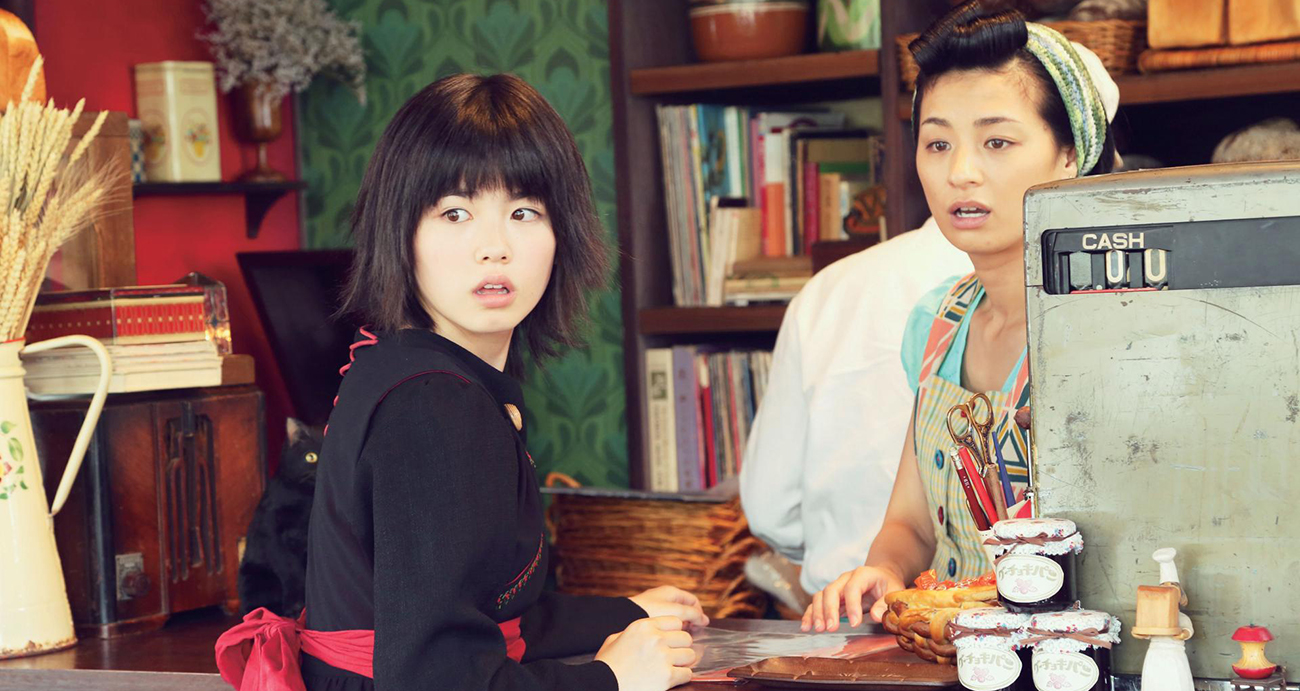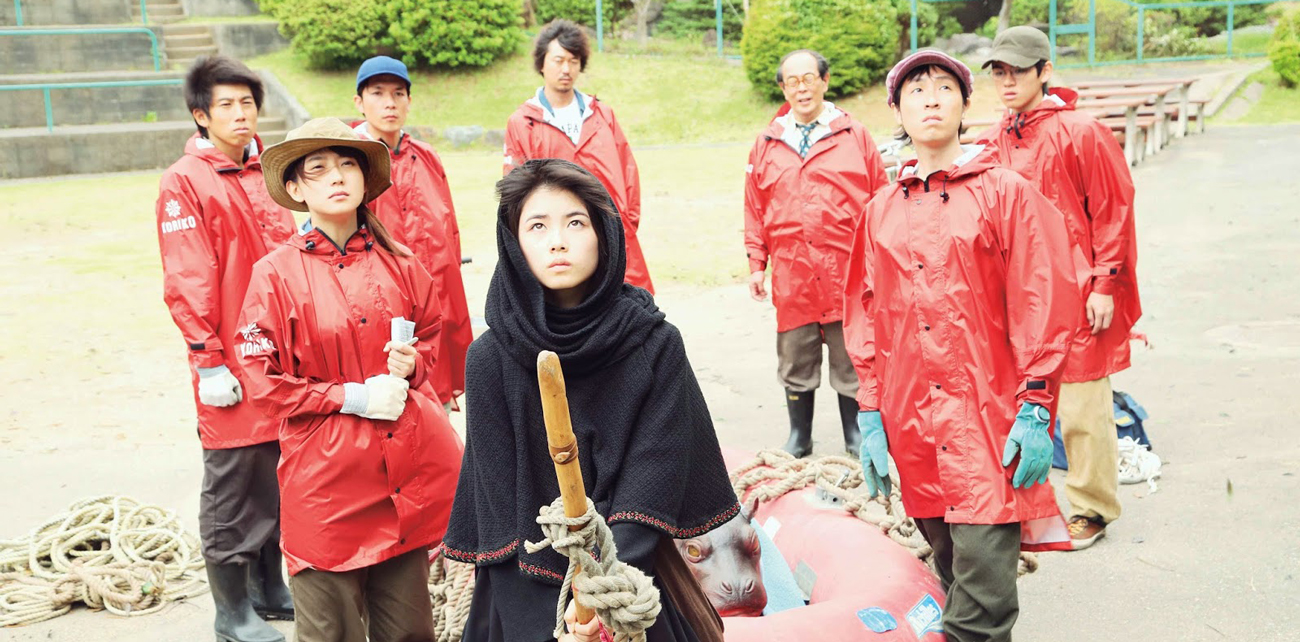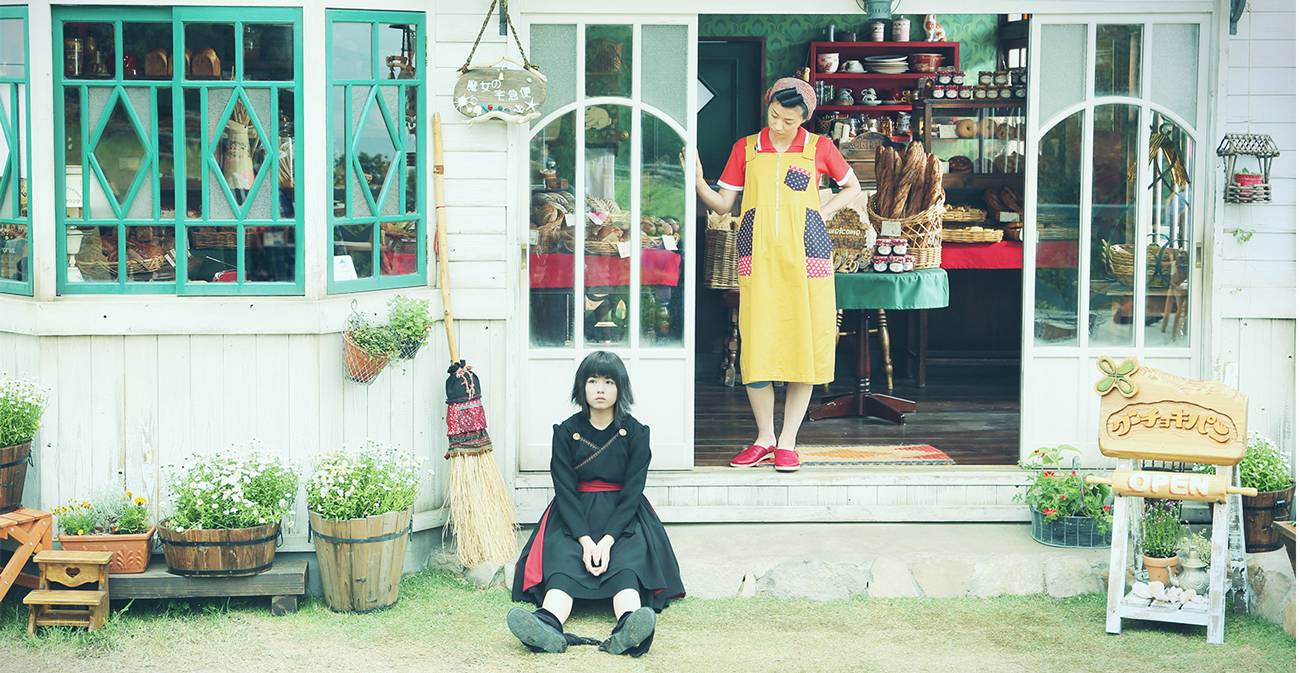Witches are incredibly important to a particular kind of little girl. Witches offer up an example of power completely in opposition to male-dominated society, representing independence and women being in charge of their own stories. There’s a reason witches tend to be just as popular among young girls as princesses, even if they tend to be cast as villains. They allow us to envision a world where we can survive on our own terms.
Based on the novel by Eiko Kadono, the story of Kiki’s Delivery Service, first cinematically immortalised in Hayao Miyazaki’s 1989 animated film, and now freshly re-envisioned by Takashi Shimizu’s new live-action version, is one that uses the metaphor of the witch to explore girls moving from childhood to adolescence, and how they explore and attempt to find their place in the world. In both films, Kiki is a young witch who on her thirteenth birthday is required to go on the witch’s rite of passage, leaving her family for a year in order to find a new, witch-less community to establish herself in and help people with her magic.

In Shimizu’s version, Kiki (Fuka Koshiba) initially finds her new community to be very suspicious of her, from assuming that she doesn’t have magic powers at all, to the polar opposite of believing that she is responsible for raining curses down upon the townsfolk. She sets up a delivery business, taking advantage of her talent for flying, in order to prove her worth to the community, but finds her powers deserting her as the lack of faith in her among the townsfolk becomes more apparent.
Shimizu creates a world for Kiki to inhabit that is rather reminiscent of a TV fantasy miniseries in aesthetic, big and bold sets cut out of a storybook that never quite lose the feeling of hiding flimsy balsa board. The acting too is often quite broad, with Koshiba presenting a rather brash Kiki who goes through her journey of growth via sudden jerky leaps of faith and narrative.

One of the biggest problems with Shimizu’s Kiki is the fact that given it is live-action, many of the more fantastical scenes and effects have been rendered in CGI, and I can’t beat around the bush about this – it is terrible. Especially cringe-worthy are the CGI animals – Kiki’s constant cat companion Jiji, much beloved in Miyazaki’s version, here appears to have been animated by artists only vaguely cognizant of both how big cats are and how they actually move, resulting in an unsettling creature that appears to have wandered directly out of the uncanny valley. There is also a baby hippopotamus (Hayley, why on earth is there a baby hippopotamus character? Don’t worry, faithful reader, I’ll be getting to that!) that appears so unreal that it would be hilarious if it wasn’t also terrifying.
It’s an unfortunate handicap that this film keeps running up against, in that audiences cannot help but compare it to the magic of Miyazaki, and of course it comes up short. The film attempts to combat this by coming up with a divergent ending, which finds Kiki taking the lead in helping the injured star attraction at the town’s local zoo, flying the baby hippo to the veterinarian on a neighbouring island, and regaining both her self-confidence and the respect of the town. This is just a vague outline for a final act that juggles several bizarre disparate elements that end up going so completely off the rails that it is quite blindsiding. For small children I imagine this ending sequence would not come across as egregious, but as a representative of the adult population my jaw attempted to unhinge itself in disbelief and I never quite recovered.

Remaking a beloved classic is hard enough with the weight of the original ensuring audiences will be suspicious of any such endeavour from the get go. But studios and filmmakers clearly aren’t deterred if it means a ready audience, wary or not. It would, however, be nice if these kind of remakes had the budget behind them to present a cohesive vision that didn’t look cheap. Beyond that, it is very easy to line up the emotional beats of a familiar story, but if any divergence is just to provide a point of difference and there’s no real heart behind them, then what is the point?
Kiki’s Delivery Service is a story about a young girl establishing herself as a person, deciding who she wants to be, and gaining the respect of her community to do so. This film however doesn’t seem to entirely have confidence in establishing itself as a unique entity apart from its beloved predecessor. Shimizu’s version attempts to have all the right spells laid out, but there simply isn’t enough magic to bind them together into a self-reliant whole.
Kiki’s Delivery Service will be screening at the 2014 Japanese Film Festival.
